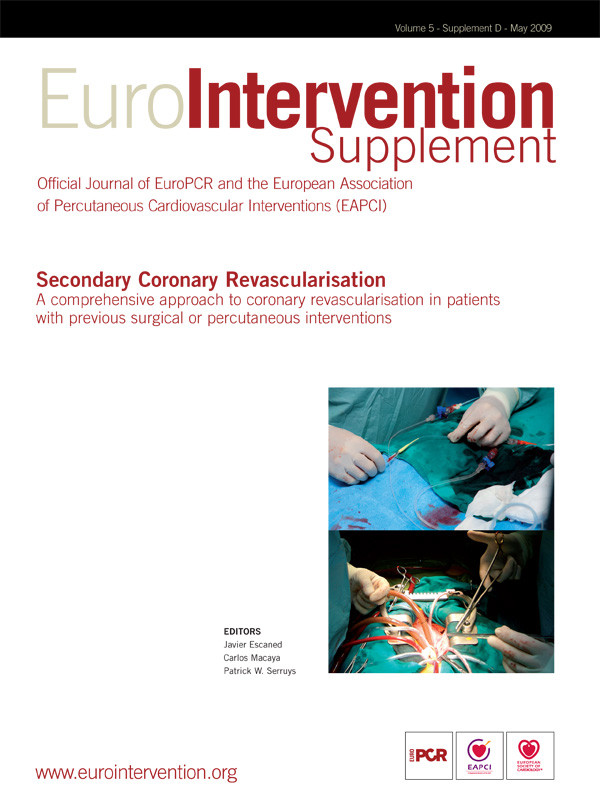Over the last ten years we can see a substantial increase in the number of revascularisation procedures in our patients who had previous surgical or percutaneous coronary revascularisations. As we confront the future, it becomes clear that the number of these patients will continue to grow as a result of both the increase in those originally treated and the overall improvement in their survival rates.
Secondary coronary revascularisation, either surgical or percutaneous, can be seen as the necessary result of the long-term failure of conduits, stenting, or the natural progression of native coronary disease. Secondary coronary revascularisation is most likely to be performed on patients who present with a complex profile, characterised by extensive and chronic atherosclerotic disease, complex anatomy of grafts, higher risk of atherothrombotic embolism, more frequent left ventricular impairment, and extensive coverage of coronary segments by metallic stents, including critical locations like bifurcations and coronary ostia. It is a matter of concern that our knowledge on how to deal with these problems is, in many occasions, poorly implemented in clinical practice, despite our having substantial evidence of its benefit. Furthermore, fast developing diagnostic techniques, like multislice computed tomography or intracoronary imaging techniques, may provide new opportunities in establishing the causes of long-term failure of revascularisation, the status of surgical grafts, stents and native coronary vessels, and in the complex decision making as to the best technique of repeat revascularisation.
It is with these observations that the initial idea for the current supplement was born. As you look through the table of contents of this special edition, you will see many articles from Madrid or Rotterdam, the two institutions that chose to address the overall issue of secondary coronary revascularisation as a whole. The cluster of challenges that makes up this field of revascularisations deserves a comprehensive approach, and it is with this in mind –with the aim of exchanging ideas between physicians, clinical and interventional cardiologists, as well as cardiac surgeons– that a dedicated meeting, the 1st International Symposium on Secondary Coronary Revascularisation, was held in Madrid on the 26-27 September, 2008, organised by the Hospital Clinico San Carlos (Madrid) and the Thoraxcenter (Rotterdam). It was out of this symposium that many of the ideas you see in the following articles were first discussed, with additional collaboration from other authors on specific subjects that were identified as relevant and of interest during the meeting.
The concern and interest raised by the Madrid meeting fulfilled the expectation of its organisers: to create an awareness of this growing, and yet not fully acknowledged category of coronary revascularisation. The need to address these issues has become ever more pressing. To further the diffusion of the information contained in this supplement, we could find no better partners than Jean Marco and the Board of Directors of EuroPCR, who, through their dedication to education and their outstanding commitment to furthering our knowledge and practice, have invited us to join EuroPCR 2009 in a dedicated symposium on secondary revascularisation.
An opportunity to exchange information, further dialogue, capture that “take-home” message, all these are a key opportunities to expand the debate on this problem, and to disseminate, on a global scale, the resulting reflections among all those involved in the treatment of coronary artery disease.

